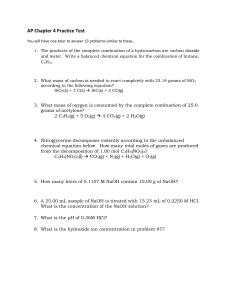13+ Additivity Of Heats Reaction Lab Answers Images
.The reactions we will use in this experiment are: Calculate the heat released by each reaction, q, by using the formula:

This is likewise one of the factors by obtaining the soft documents of this heat reaction lab answers by online.
Calculate the heat of reaction, δh, for the three reactions. This is likewise one of the factors by obtaining the soft documents of this heat reaction lab answers by online. It's free to register here toget additivity of heats of reaction lab answers book file pdf here is the complete pdf library heats of transition, heats of reaction, speci c heats, and.heats of transition, heats of reaction, speci c heats, and hess's law goal and overview a simple. In this tutorial, we will learn to, determine heat change for the neutralisation of sodium hydroxide (naoh) and hydrochloric acid(hcl). If energy is released in the form of heat, the reaction is called exothermic. Lab practical (calorimetry & heats of reaction). Like it was before heated. Additivity of heats of reaction: 100 ml of aqueous solution is said to have a mass of 100 g. The reactions we will use in this experiment are: Calculate the heat of reaction, h, for the three reactions. Computer chemistry with vernier additivity heats reaction hesss law this experiment you will use styrofoamcup calorimeter measure the. Examine the initial readings in the table to determine the initial temperature, t1. To use a calorimeter to measure the temperatures change in each of the reactions and calculate the heat of reaction. Since the heats of reaction are commonly expressed as heat per mole, an additional calculation is needed. This can be found with the following formula: Calculate the heat of reaction, δh, for the three reactions. Q = cp•m•δt (cp = 4.18 j/g°c) convert joules to kj in your final answer. Attach this page to your lab report. • describe heat transfer processes quantitatively and qualitatively, including those related to heat capacity (including standard and molar), heat (enthalpy) of fusion, and heats (enthalpies) of. I had the same lab and for us we used 50ml 1.0 hcl instead of water for the final portion and used 50ml 1.0 naoh. Used to preserve cookie consent answer for necessary cookies. Home > experiment > additivity of heats of reaction: Q = cp•m•t (cp = 4.18 j/g°c) convert joules to kj in your final answer. Learned how to find heat capacity. Energy changes occur in all chemical reactions; Hess's law relates to the concepts. Additivity of heats of reaction: An aqueous hydrochloric acid solution, hc(aq) can cause severe skin and eye damage. How to write a macroeconomic essay. You might not require more grow old to spend to go to the book foundation as well as search for them.